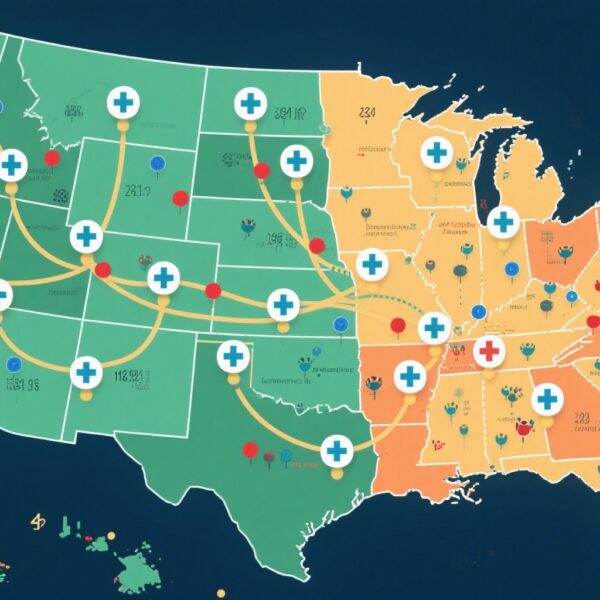Highlight
The phase III TOPAZ-1 study demonstrates that adding durvalumab to gemcitabine and cisplatin significantly improves overall survival (OS) in advanced biliary tract cancer (aBTC) with an extended 3-year follow-up showing sustained benefit and manageable safety. The 36-month OS rate nearly doubles, and extended long-term survivors are observed across all clinical subgroups.
Study Background
Biliary tract cancer (BTC) encompasses a heterogeneous group of aggressive malignancies including intrahepatic and extrahepatic cholangiocarcinoma and gallbladder cancer. Most patients present with advanced, unresectable disease, leading to poor prognosis and limited treatment options. Gemcitabine combined with cisplatin (GemCis) has been the standard first-line chemotherapy for aBTC, yielding median OS around 11–12 months. Emerging immunotherapy approaches targeting programmed death-ligand 1 (PD-L1) have shown promising activity in various solid tumors by reinvigorating antitumor immune responses. Durvalumab, a PD-L1 inhibitor, combined with GemCis, was investigated in the TOPAZ-1 trial to improve survival outcomes in this hard-to-treat population.
Study Design
TOPAZ-1 (NCT03875235) was a randomized, double-blind, placebo-controlled phase III trial conducted in patients with advanced or metastatic BTC who had not received prior systemic therapy. Participants were randomized in a 1:1 ratio to receive durvalumab plus GemCis or placebo plus GemCis every 3 weeks for up to 8 cycles. Thereafter, patients continued durvalumab or placebo monotherapy every 4 weeks until disease progression or unacceptable toxicity. The primary endpoint was overall survival (OS). Secondary assessments included safety, extended long-term survivors (eLTS defined as survival ≥30 months), and post-study anticancer therapy use. A median follow-up of 41.3 months allowed for assessment of long-term outcomes.
Key Findings
A total of 685 patients were randomized—341 to durvalumab+GemCis and 344 to placebo+GemCis. After a median follow-up of 41.3 months, the durvalumab arm demonstrated a median OS of 12.9 months (95% CI 11.6–14.1), compared to 11.3 months (95% CI 10.1–12.5) in the placebo arm. This corresponds to a hazard ratio (HR) of 0.74 (95% CI 0.63–0.87), indicating a 26% reduction in the risk of death with durvalumab addition. Notably, the 36-month OS rate was 14.6% in the durvalumab group versus 6.9% with placebo, more than doubling the proportion of long-term survivors.
Among the 82.6% of patients achieving disease control, the 36-month OS rate remained higher with durvalumab (17.0%) relative to placebo (7.6%). The extended long-term survivor subgroup represented 12.8% of all patients, with a greater percentage in the durvalumab arm (17.0%) compared to placebo (8.7%). These eLTS spanned all clinically relevant subgroups, suggesting broad applicability of benefit.
Importantly, survival benefit from durvalumab remained consistent regardless of whether patients received subsequent anticancer therapies after progression. Safety profiles were manageable and serious adverse events (SAEs) among eLTS were comparable between arms and lower than in the broader safety population, reinforcing the tolerability of continued treatment.
Expert Commentary
The TOPAZ-1 update represents a crucial milestone for aBTC, a disease traditionally plagued by dismal outcomes. The durable OS benefit and doubling of long-term survivors with the incorporation of durvalumab into standard chemotherapy signal a tangible shift toward immune-enhanced therapy even in biliary cancers. These results support the biological rationale that PD-L1 blockade can synergistically augment chemotherapy-induced tumor antigen release and immune activation.
Nonetheless, while median OS improvement may appear modest numerically, extending survival and durable disease control in a subset of patients provides a meaningful clinical advance. Future work should focus on biomarker stratification to identify those who derive maximal benefit and optimize sequencing with subsequent therapies. Additionally, real-world data and quality of life assessments would inform routine clinical implementation.
Conclusion
With a median follow-up exceeding three years, the TOPAZ-1 trial update confirms that durvalumab combined with gemcitabine and cisplatin conveys a lasting survival advantage in patients with advanced biliary tract cancer. The consistent benefit across subgroups, coupled with manageable long-term safety, firmly establishes durvalumab plus GemCis as a new standard-of-care regimen. These findings empower clinicians and patients with evidence-based confidence for treatment decisions in this challenging malignancy, underscoring the expanding role of immunotherapy in gastrointestinal cancers.
Funding and Clinical Trial Registration
The TOPAZ-1 study was sponsored by AstraZeneca. Clinical trial registration: ClinicalTrials.gov Identifier: NCT03875235; https://clinicaltrials.gov/study/NCT03875235.
References
Oh DY, He AR, Qin S, Chen LT, Okusaka T, Kim JW, et al. Durvalumab plus chemotherapy in advanced biliary tract cancer: 3-year overall survival update from the phase III TOPAZ-1 study. J Hepatol. 2025 Nov;83(5):1092-1101. doi: 10.1016/j.jhep.2025.05.003. Epub 2025 May 15. PMID: 40381735.



